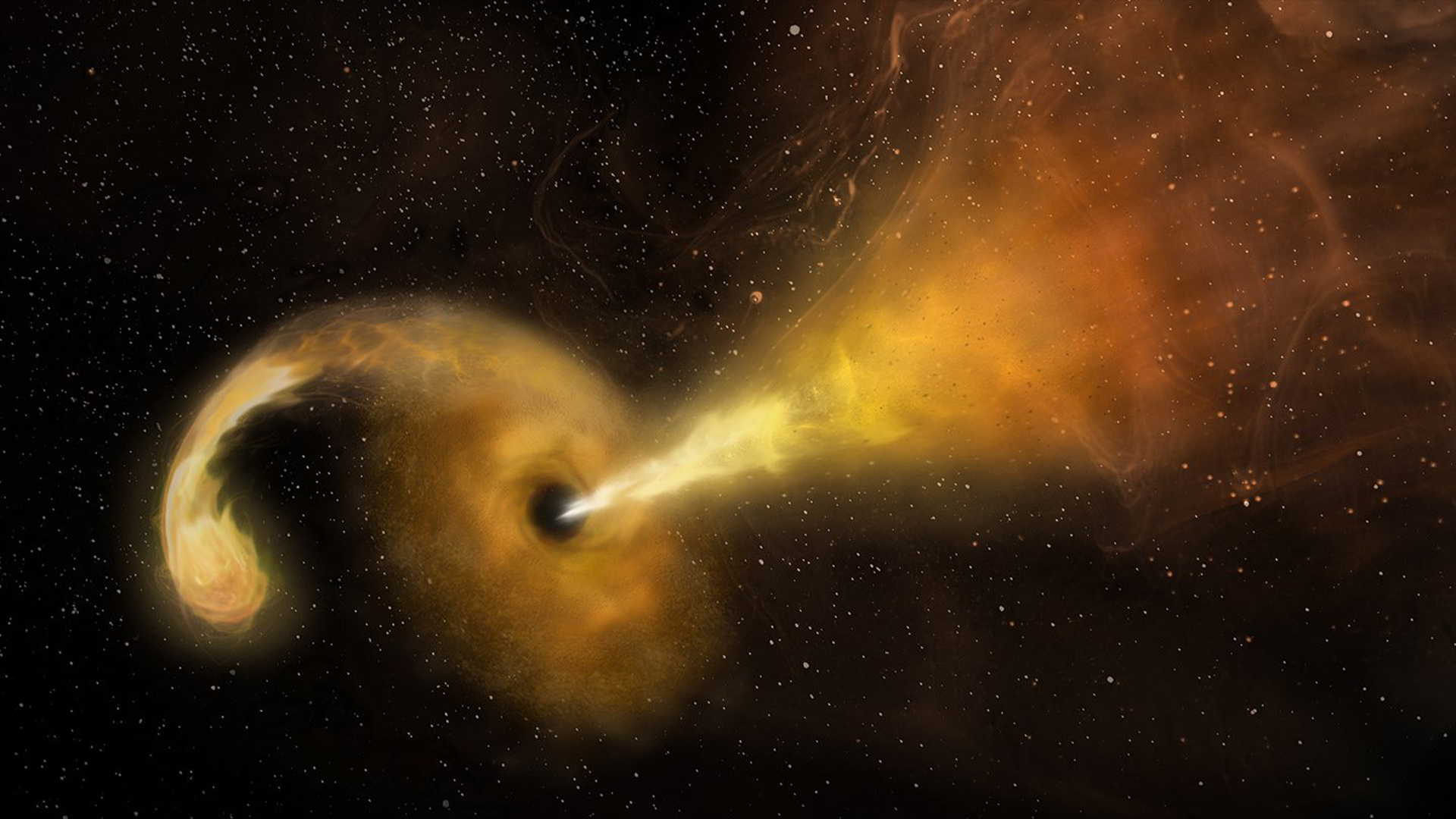Black holes keep 'burping up' stars they destroyed years earlier, and astronomers don't know why
Years after ripping stars to shreds, 24 black holes suddenly flared up with radio waves in inexplicable 'burping' bouts. Half of all star-killing black holes may experience the same.

Up to half of the black holes that devour stars "burp up" their stellar remains years later.
Astronomers made the discovery after spending years watching black holes involved in tidal disruption events (TDEs).
TDEs occur when stars venture too close to black holes. These cosmic monsters' immense gravity exerts incredible tidal forces that stretch and squeeze the stars — a process called spaghettification. The unfortunate stars involved in TDEs are ripped apart or "unraveled" in a matter of hours, signaled by a powerful flash of electromagnetic radiation in visible light.
Some of the stellar material of the destroyed star is flung away from the black hole while the rest forms a thin frisbee-like structure around it called an accretion disk, which gradually feeds that material to the black hole. In its early days, the accretion disk is unstable, and matter sloshes around and smashes into itself, causing outflows detectable by radio waves. But astronomers traditionally only look at these star-eating black holes for a few months following the TDEs.
Related: A black hole 'assassin' ripped a star to shreds and left its guts strewn about the galaxy
In the new research, however, astronomers watched black holes involved in TDEs for hundreds of days, finding that in up to 50% of the cases, the black holes "burped back" stellar matter years after the TDE.
"If you look years later, a very, very large fraction of these black holes that don’t have radio emission at these early times will actually suddenly 'turn on' in radio waves," study lead author Yvette Cendes, a research associate at the Havard and Smithsonian Center for Astrophysics told Live Science. "I call it a 'burp' because we’re having some sort of delay where this material is not coming out of the accretion disk until much later than people were anticipating."
Sign up for the Live Science daily newsletter now
Get the world’s most fascinating discoveries delivered straight to your inbox.
The re-emission of this material for 10 of the 24 black holes happened between two and six years after the star-destroying events. The observations are described in a study uploaded Aug. 25 to the preprint database arXiv, which has not yet been peer-reviewed.
Black holes are definitely messy eaters
Cendes and the team don't know what's causing black holes to "switch on" after many years, but whatever it is definitely does not come from inside the black holes.
Black holes are marked by an event horizon, the point at which gravity is so strong that not even light can escape."Black holes are very extreme gravitational environments even before you pass that event horizon, and that's what’s really driving this," Cendes said. "We don’t fully understand if the material observed in radio waves is coming from the accretion disk or if it is being stored somewhere closer to the black hole. Black holes are definitely messy eaters, though."
Part of the mystery stems from computer models that simulate TDEs, which typically terminate just weeks after the destruction of the star. The new research suggests the models need to be updated to capture some of the black holes' most unexpected behavior.
For instance, in two cases, the radio waves emitted by black holes peaked, faded and then peaked again.
"There was a second peak, the two black holes re-brightened, and that's completely new and unexpected," Cendes said. "People were thinking that you'd have one outflow, and then it's kind of done. So this observation means these black holes can 'turn on' and then 'turn on' again."
Cendes said the team will keep monitoring all of the TDE-causing black holes, especially as some of them are still getting brighter.
Robert Lea is a science journalist in the U.K. who specializes in science, space, physics, astronomy, astrophysics, cosmology, quantum mechanics and technology. Rob's articles have been published in Physics World, New Scientist, Astronomy Magazine, All About Space and ZME Science. He also writes about science communication for Elsevier and the European Journal of Physics. Rob holds a bachelor of science degree in physics and astronomy from the U.K.’s Open University










